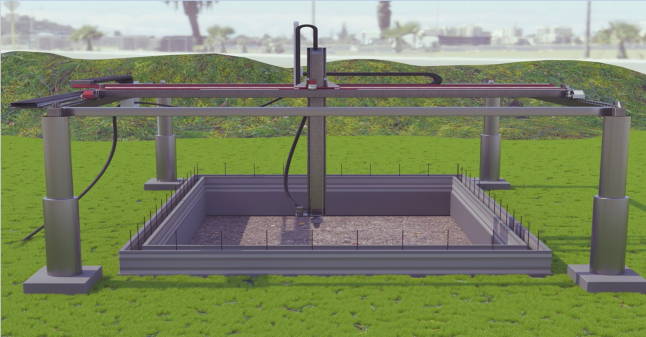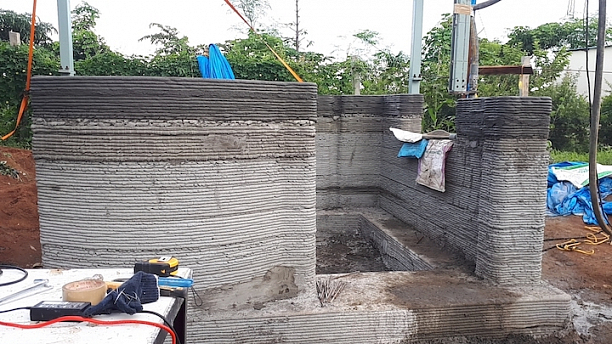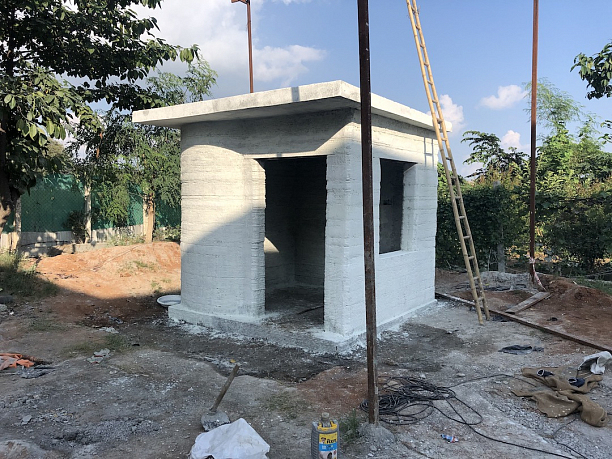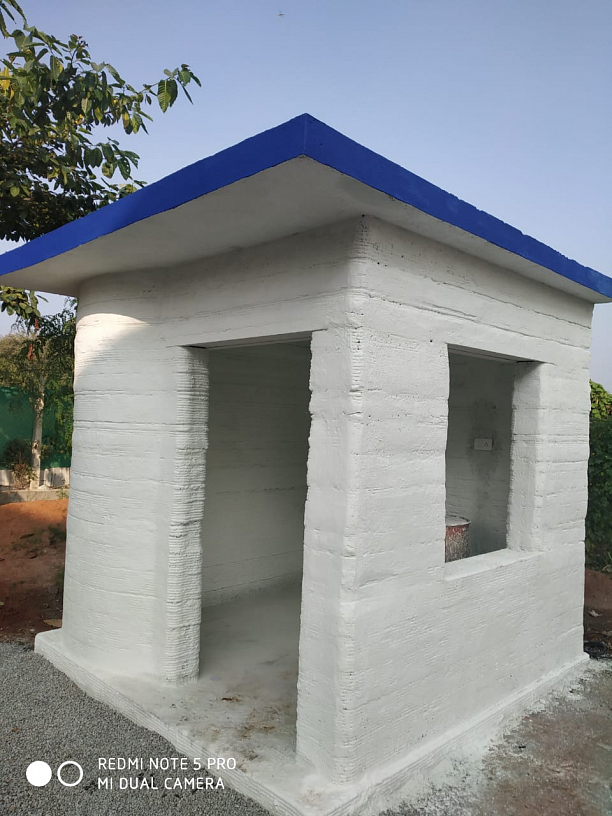

45013
FCOM Electronics Co., Ltd
3D Printing Robot
Russia, Republic of Tatarstan
Market: Mechanical engineering, Real estate, Building, Robotics
Stage of the project: Prototype or product is ready
Date of last change: 19.02.2020
Russia, Republic of Tatarstan
Market: Mechanical engineering, Real estate, Building, Robotics
Stage of the project: Prototype or product is ready
Date of last change: 19.02.2020
Idea
Innovative production process development of 3D building printers and robots. Building raw materials process development for 3D building printers and robots.
Construction of buildings and structures using 3D building printers and robots.
Construction of buildings and structures using 3D building printers and robots.
Current Status
Currently we have:
Patents for inventions and utility models - 2 units.
Patent applications of inventions and utility models - 17 units.
3D printer built in India.
Worked out recipes based on local Indian materials.
Printed and presented the first small house in India to the Indian government.
Assembling the first 3D building robot to print three-story houses (we plan to print houses with cross section of 60x40 feet starting from March 2020).
Assembling 3D building robot to print one-story houses for poor civilians with area of 800 square feet.
Suppliers of all components to create 3D robots have been developed.
Patents for inventions and utility models - 2 units.
Patent applications of inventions and utility models - 17 units.
3D printer built in India.
Worked out recipes based on local Indian materials.
Printed and presented the first small house in India to the Indian government.
Assembling the first 3D building robot to print three-story houses (we plan to print houses with cross section of 60x40 feet starting from March 2020).
Assembling 3D building robot to print one-story houses for poor civilians with area of 800 square feet.
Suppliers of all components to create 3D robots have been developed.
Market
Any country is suitable. It can be mass, private or exclusive construction for different levels of customers.
Problem or Opportunity
1. Automation of a significant number of construction operations.
We strive for the principle that 2 people should build a house of any size (within 3 stores) and all basic operations are carried out by the machine under the control of the operator.
2. Using local materials.
All recipes are created based on the use of those materials which are available on the market.
3. High speed system deployment.
Very important parameter, as almost all 3D printers existed now have a not-so-fast deployment rate at the actual construction site.
4. High maintainability of the machine.
5. Professional training.
Work on this technology requires personnel that no university in the world prepares.
We strive for the principle that 2 people should build a house of any size (within 3 stores) and all basic operations are carried out by the machine under the control of the operator.
2. Using local materials.
All recipes are created based on the use of those materials which are available on the market.
3. High speed system deployment.
Very important parameter, as almost all 3D printers existed now have a not-so-fast deployment rate at the actual construction site.
4. High maintainability of the machine.
5. Professional training.
Work on this technology requires personnel that no university in the world prepares.
Solution (product or service)
Our main difference from competitors is that we believe the existing concept of 3D building printer is a little outdated, now it’s important to develop 3D building robots based on advanced 3D printing technology. The purpose of the 3D building robot is to automate most of construction processes. On the current generation of the 3D robot, we provide for the automation of the following processes:
3D printing of formwork
Automatic preparation and concrete supply or other building mixture
Laying / pouring of concrete into the formwork
Vibration of poured concrete
Alignment of external walls and parts of internal walls
Giving special texture of external and internal walls for decoration
Floor pouring and polishing
Filling / blowing insulation
Plans for the next generations of 3D robots include:
Painting of interior and exterior walls
Automatic bar reinforcement
Automatic installation of floors and jumpers
3D printing of formwork
Automatic preparation and concrete supply or other building mixture
Laying / pouring of concrete into the formwork
Vibration of poured concrete
Alignment of external walls and parts of internal walls
Giving special texture of external and internal walls for decoration
Floor pouring and polishing
Filling / blowing insulation
Plans for the next generations of 3D robots include:
Painting of interior and exterior walls
Automatic bar reinforcement
Automatic installation of floors and jumpers
Competitors
Companies of traditional and 3D construction, our main difference from them is that we believe the existing concept of 3D building printer is a little outdated, now it is important to develop 3D building robots based on advanced 3D printing technology. The purpose of the 3D building robot is to automate most of construction processes.
Advantages or differentiators
Low cost of construction (approximately 25-50% lower than traditional one).
The highest speed of construction (5-7 times faster than traditional one).
High structural strength, able to withstand a hurricane.
Huge spaces for design activities.
All this gives us the opportunity to build a house quickly, efficiently and without working capital retention for a long time. We will be able to give a price below the market one and successfully compete with any developers.
The highest speed of construction (5-7 times faster than traditional one).
High structural strength, able to withstand a hurricane.
Huge spaces for design activities.
All this gives us the opportunity to build a house quickly, efficiently and without working capital retention for a long time. We will be able to give a price below the market one and successfully compete with any developers.
Finance
The price cost and sales cost of 3D printing robot depend on printing size, necessary peripheral equipment, local raw materials and so on.
The construction cost of house depends on many aspects too, need to calculate for exact project and design.
3D printing cost is approximately 25-50% lower than traditional construction.
The construction cost of house depends on many aspects too, need to calculate for exact project and design.
3D printing cost is approximately 25-50% lower than traditional construction.
Business model
Partnership between innovative development team and investors with shares.
Money will be spent on
Stage 1
Assembled 3 units of building robot models for construction of low-rise buildings (1-3 stories), assembled necessary peripheral equipment, selected recipes for conditions of exact market based on local raw materials, selected all additional components for mass production, collected data on local preferences, printed testing house 200 sqm.
6-8 months, 3 million USD
Stage 2
Construction of workshops for production of 3D building robots and peripheral equipment, assembled 10 units of 3D robots, construction process of low-rise 1-2 story buildings (at least 40 residential buildings), designed 3D building robot for printing of 5-story buildings.
8-10 months, 10 million USD
Further stages TBD
Assembled 3 units of building robot models for construction of low-rise buildings (1-3 stories), assembled necessary peripheral equipment, selected recipes for conditions of exact market based on local raw materials, selected all additional components for mass production, collected data on local preferences, printed testing house 200 sqm.
6-8 months, 3 million USD
Stage 2
Construction of workshops for production of 3D building robots and peripheral equipment, assembled 10 units of 3D robots, construction process of low-rise 1-2 story buildings (at least 40 residential buildings), designed 3D building robot for printing of 5-story buildings.
8-10 months, 10 million USD
Further stages TBD
Offer for investor
Partnership share will depend on possible investment value.
Team or Management
Risks
New technologies can always give a delay during development process, that is why we showed a time period of several months.
Invention/Patent
2019101351
Photos




Presentation
Sign in/Sign up